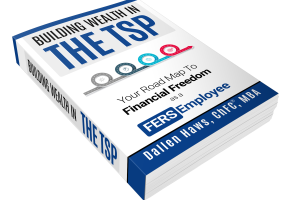If you’ve spent any time online, you’ve probably seen one of those viral clips where a cyclist is about to win a race. They’re meters from the finish line, throw their hands up in celebration, and bam—they trip, fall, or get passed at the last second. Why? Because they got comfortable. They assumed the hard part was over.
That’s the last thing I want for any federal employee nearing retirement. Unfortunately, it happens far too often. After years—even decades—of service, people make costly mistakes right at the finish line. And in the world of retirement, these errors aren’t just embarrassing—they can be financially devastating.
Let’s talk about four of the most common retirement mistakes federal employees make and, more importantly, how you can avoid them.
Mistake #1: Confusing Gross vs. Net Income
When planning for retirement, one of the first steps federal employees take is to request a pension estimate from HR. That’s a great start. But here’s the issue—most estimates (especially those from systems like GRB) focus on gross pension numbers. And while gross numbers look great on paper, they don’t tell the full story.
You don’t spend your gross income. You spend your net income—what’s left after taxes, health premiums, FEGLI, survivor benefits, and other deductions. That number is what really matters in retirement.
For example, if your estimate says you’ll receive $60,000 a year in pension, but after taxes and deductions you’re only taking home $42,000, that’s a major difference—especially if your lifestyle was based on a higher take-home income. And many pension calculators don’t accurately factor in taxes or assume your pension is your only income (which isn’t the case for most FERS employees who also have TSP and Social Security).
How to avoid this mistake:
Calculate your net income now (your current take-home pay).
Then, calculate your projected net income in retirement, including pension, TSP withdrawals, Social Security, etc.
Compare net vs. net—not gross vs. gross. That’s your reality check.
Mistake #2: Rushing Through the Retirement Application
Your retirement application is one of the most important documents you’ll ever fill out. It tells the government exactly how and when you want to retire, what benefits you’re electing to keep, and any major financial decisions—some of which are irrevocable.
Unfortunately, it’s not uncommon for retirees to make errors on their application—typos, missed fields, wrong boxes checked—and this can cause major delays. Some retirees have gone months without receiving their pension simply because of clerical mistakes.
And remember, most people only fill out this form once in their life. It’s complex, and you don’t want to rush it.
How to avoid this mistake:
Start early—ideally at least six months before your planned retirement date.
Read every section of the application carefully.
Double-check decisions that are irreversible (like survivor benefits).
Get help if needed—HR, a financial planner, or someone experienced in federal retirement paperwork can be invaluable.
Mistake #3: Going Too Conservative Too Soon
It’s understandable. Retirement is around the corner. The market’s unpredictable. So, many federal employees make the decision to move all of their investments into the G Fund—the safest option in the Thrift Savings Plan (TSP). The logic? “If I can’t afford to lose money, I’ll just go all-in on safety.”
The G Fund is indeed a unique and safe investment—it guarantees principal protection and pays interest based on long-term U.S. Treasury securities. But there’s a big problem with being too conservative: inflation.
Remember, retirement isn’t the finish line—it’s just a milestone. Your money needs to last potentially another 30 years.
How to avoid this mistake:
Understand that retirement is not the end of your investment journey—just the next phase.
Create a diversified portfolio that includes a mix of growth (stocks) and conservative (G Fund) investments.
Match your allocation to your goals, risk tolerance, and expected time horizon.
Don’t invest emotionally. Too many retirees panic when the market dips and move their money at the worst possible times. Stay focused on your long-term goals.
Mistake #4: Inaccurate Service Records
Another issue that trips people up is incomplete or inaccurate service records. Your pension is calculated based on your credible federal service. If your SF-50s (Standard Forms documenting your federal employment) are missing or incorrect, it can mean fewer years of service credit—and a smaller pension.
This is especially risky for people who’ve had:
Temporary or intermittent service
Military time (especially if it’s been bought back)
Breaks in service or leave without pay
Transfers between agencies (where records might not follow you)
How to avoid this mistake:
Request your OPF (Official Personnel Folder) early and review every SF-50.
Ensure all job changes, breaks in service, and retirement coverage codes are accurate.
Document everything—especially if you’re covered under a spouse’s FEHB.
Final Thoughts
Federal retirement is a huge milestone. You’ve worked hard for it—decades of service, dedication, and contribution. The last thing you want is to trip right before the finish line.
Whether it’s overestimating your income, making errors on forms, misjudging your investment strategy, or overlooking your service records—each of these mistakes can cost you.
But the good news? They’re all avoidable with the right preparation.
So take a breath, stay alert, and finish strong. Your retirement should be the reward for a career well served—not the start of a financial headache.
Here’s to a smooth landing into retirement—and beyond.


